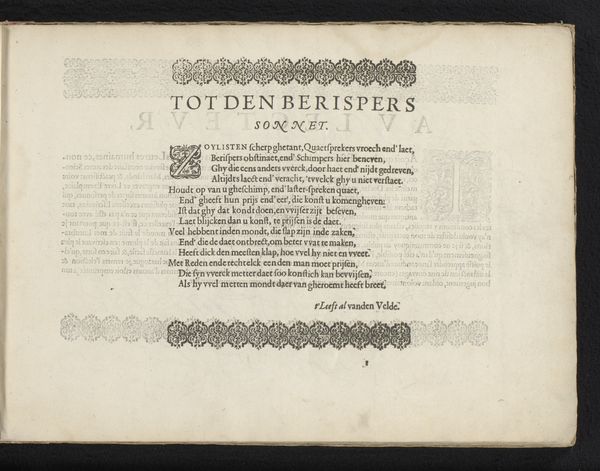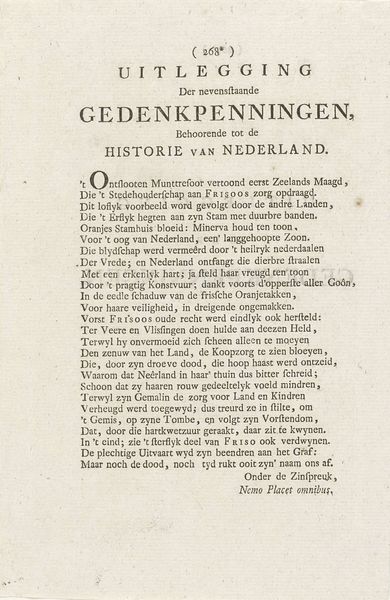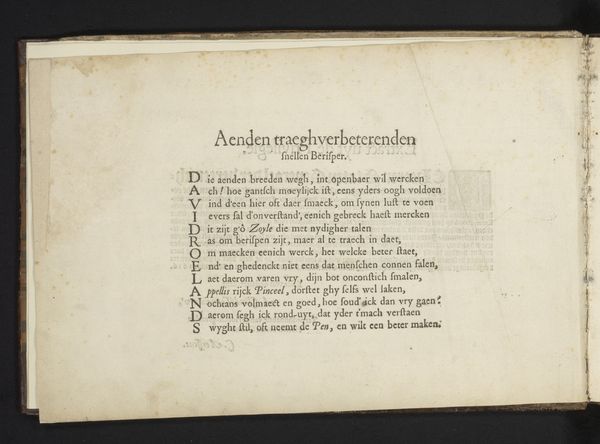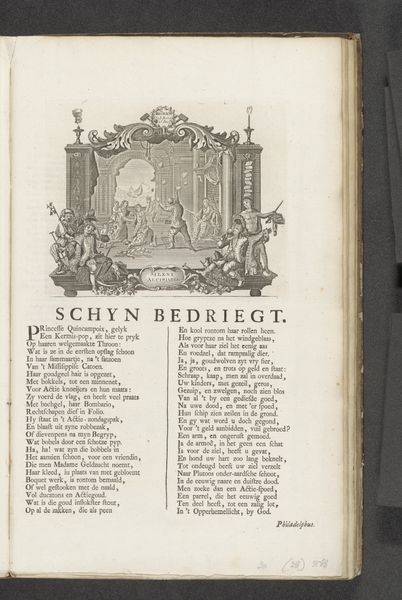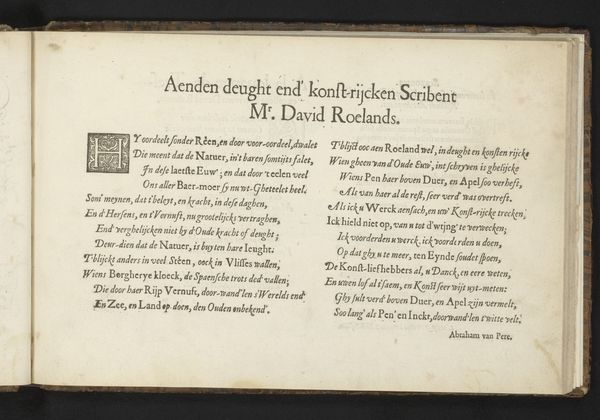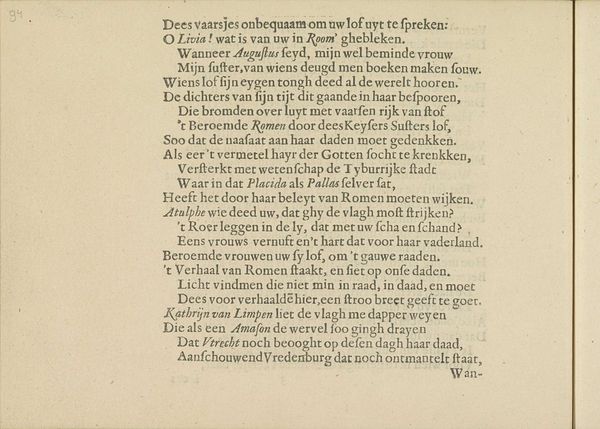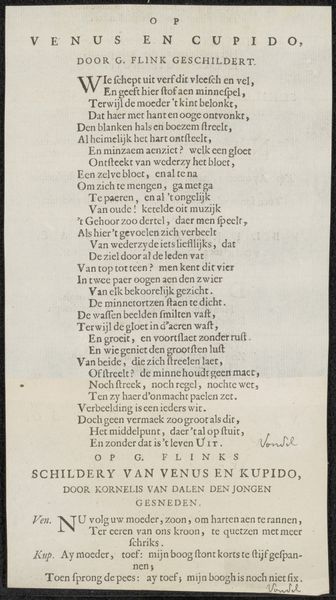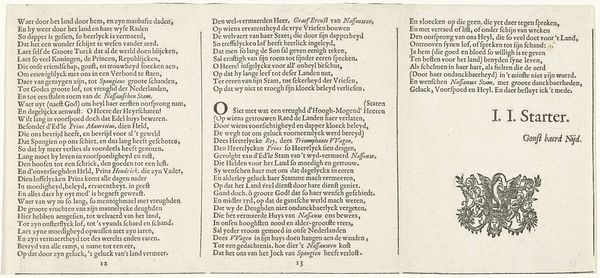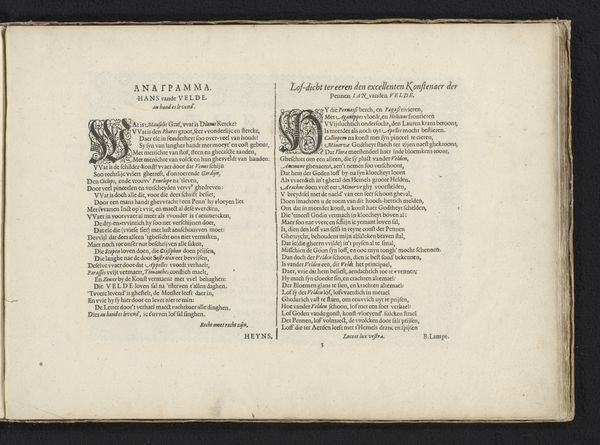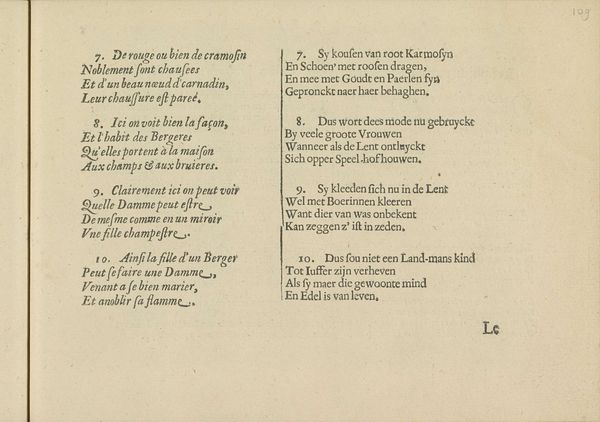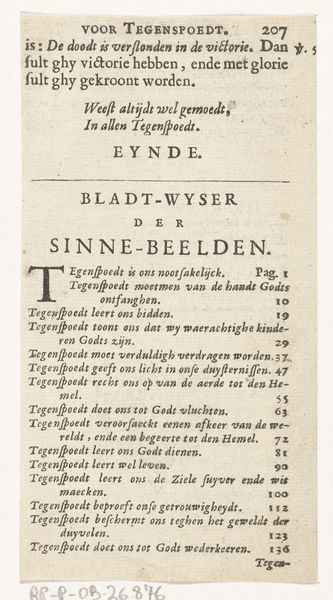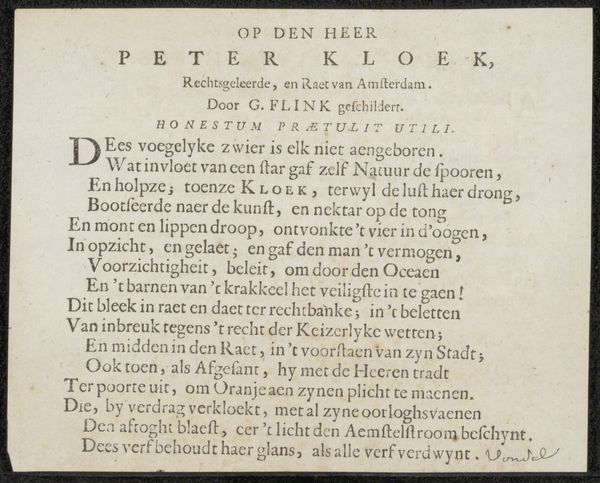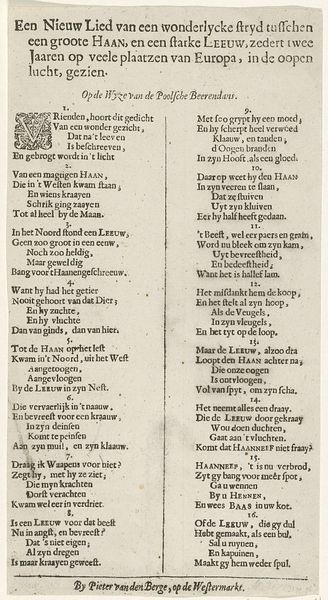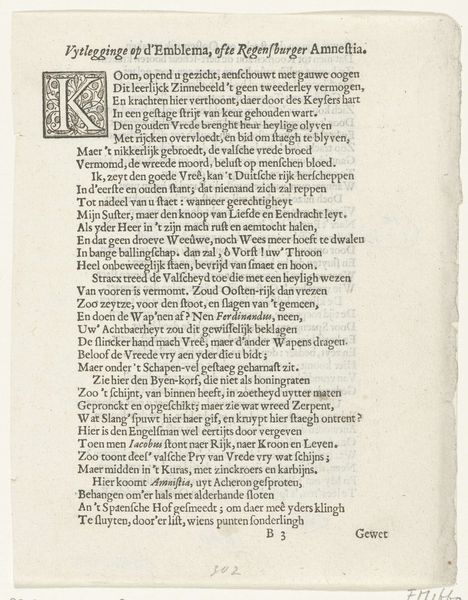
#
aged paper
#
homemade paper
#
sketch book
#
hand drawn type
#
personal sketchbook
#
fading type
#
thick font
#
sketchbook drawing
#
sketchbook art
#
historical font
Dimensions: height 210 mm, width 315 mm
Copyright: Rijks Museum: Open Domain
Curator: So, here we have Jan van de Velde's "Sonnet" from 1605, part of the Rijksmuseum collection. What strikes you immediately about this piece? Editor: The fragility of time. It's as if I can almost smell the old paper, feel its delicate fibers beneath my fingertips. It speaks of whispers across centuries, secrets etched onto its surface, doesn't it? It’s strangely moving to witness words made flesh – or in this case, paper! Curator: Absolutely. What's remarkable is that this isn't just any old manuscript; it's a page from a sketchbook. Van de Velde’s thoughts, raw and immediate, intended for a small, personal audience. Look at the texture of the homemade paper, the thick font that seems almost aggressive and modern. These suggest the book had a tight bond with the artist himself. Editor: Yes, there’s such intimacy about the composition, isn't there? The poem itself is almost like a private venting of feelings aimed “To the critics” in a tone that makes you wonder if he knew they might not listen even in the afterlife! This personal glimpse feels subversive, a little thrill—that rebellious "up yours!" vibe we often forget even existed back then. Curator: He had a position to uphold; being a famous engraver he has his detractors for sure! But in broader strokes, he attacks those with words and not deeds, those who judge without knowing or being able to show how it’s done. Van de Velde’s use of the Dutch vernacular of his time provides insight to a complex social dynamic of that era that is sadly still relevant today. What’s powerful is that the message isn’t always evident today due to the ‘fading type’ suggesting his ‘critics’ succeeded in hiding this work away! Editor: Indeed. In a way, the fading itself becomes part of the artwork's statement, amplifying its power to comment on how artistic reputation gets negotiated in cultural contexts. It makes you think about art history's capricious judgments, who gets remembered, and why. Curator: Precisely. "Sonnet van Jan van de Velde," is much more than a quaint artifact. It's a window into the past, allowing us a peek at not just the poem and words from an artists, but what was potentially on their minds. Editor: And perhaps, a lesson in empathy for our own time, that the words we scribble in the heat of the moment may one day whisper profound truths to those who care to listen.
Comments
No comments
Be the first to comment and join the conversation on the ultimate creative platform.
